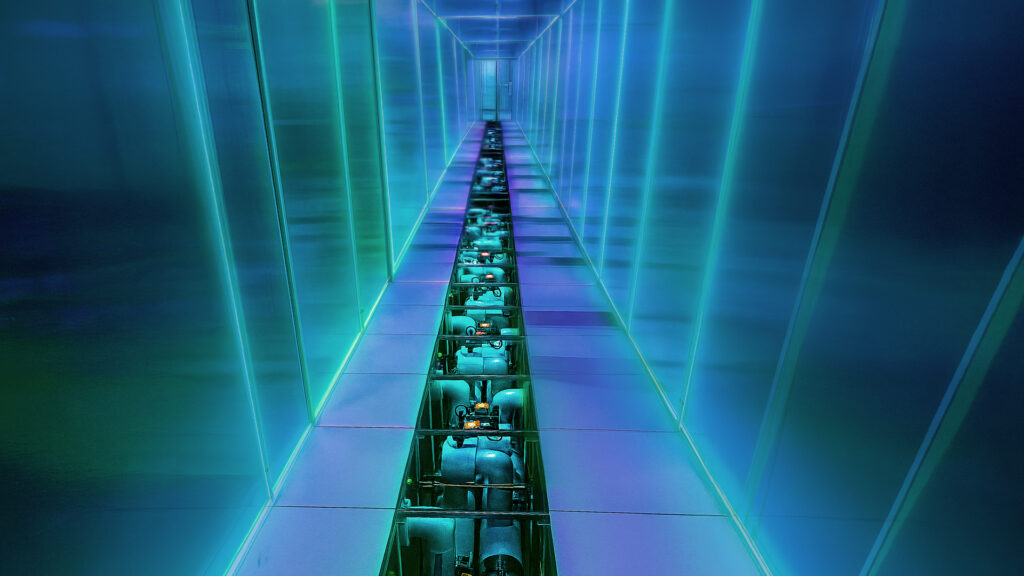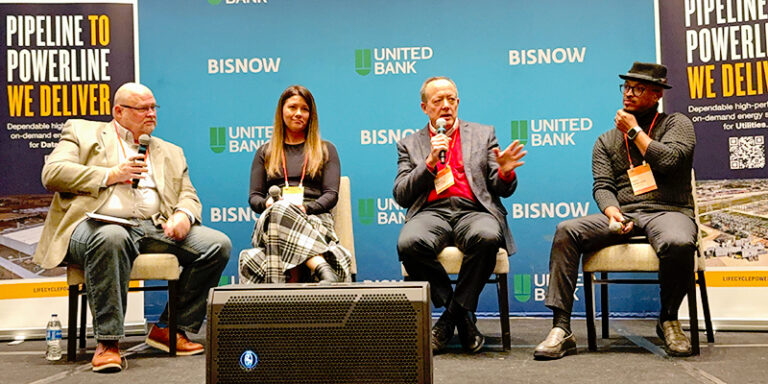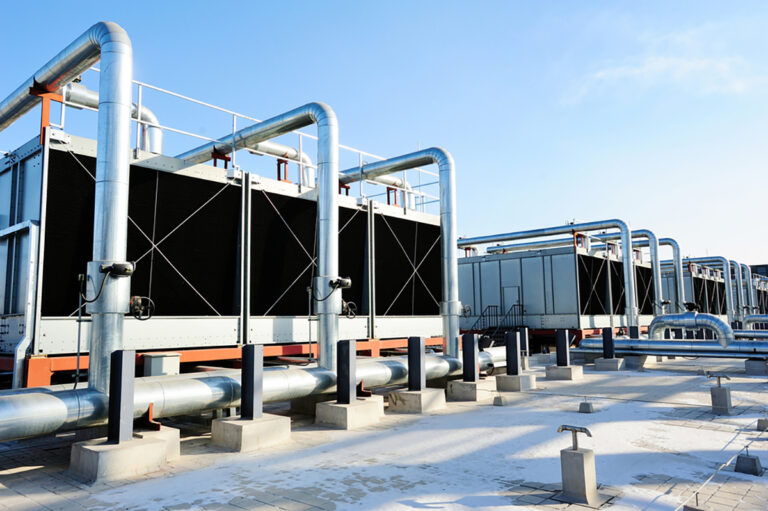Home Data Center Services Liquid Cooling Liquid Cooling Retrofits
Liquid Cooling Retrofits
Bring Liquid Cooling to Air-Cooled Environments
AI and accelerated computing are driving thermal densities beyond what traditional air-cooled environments can manage. In many legacy facilities, this creates stranded capacity, rising PUE, and hot spots that limit IT growth. Compu Dynamics’ liquid cooling retrofit services enable you to transform existing data halls into liquid-cooled, high-density-ready environments without the need for a complete rebuild.

Liquid Cooling Retrofit Services We Offer
Our approach follows ASHRAE Technical Cooling System (TCS) best practices and draws on proven field experience to ensure safe, reliable integration. Isolated secondary loops protect facility water, ultra-clean fluid paths preserve equipment life, zone-based leak detection safeguards operations, and flow rates are fine-tuned for chip-level heat removal. The result: a retrofit that meets today’s performance needs while enabling future scalability.
Liquid Cooling Retrofit Services We Offer
Our approach follows ASHRAE Technical Cooling System (TCS) best practices and draws on proven field experience to ensure safe, reliable integration. Isolated secondary loops protect facility water, ultra-clean fluid paths preserve equipment life, zone-based leak detection safeguards operations, and flow rates are fine-tuned for chip-level heat removal. The result: a retrofit that meets today’s performance needs while enabling future scalability.
Design-Assist Engineering
Each retrofit begins with a site-specific assessment, combining CFD modeling, airflow analysis, and on-site inspections to pinpoint thermal constraints. Retrofit-ready liquid cooling designs are developed with optimized flow rates, pressure drops, and redundancy levels that align with both current and future capacity plans.
Rack-Level Integration
Retrofits are tailored to fit existing cabinet layouts, incorporating direct-to-chip cold plates, rear door heat exchangers (RDHx), or immersion systems. In-rack manifolds, port sizing, and isolation valves are configured to Compu Dynamics’ serviceability and performance standards—ensuring efficient operation and simplified maintenance.
Mechanical Room Upgrades
Chilled water systems are enhanced to support liquid cooling loads through additional plate-and-frame heat exchangers, secondary loop integration, and CDUs sized for specific rack and POD densities. Designs incorporate redundancy schemes such as N+1 or greater to match operational requirements.
End-to-End System Integration
Piping, valves, controls, and leak mitigation systems are installed and commissioned to ASHRAE TCS standards. Full integration with the facility BMS provides continuous monitoring of temperature, pressure, flow, and leak detection, enabling real-time operational oversight.
Long-Term Support & Maintenance
Retrofits are backed by CompuCare™ maintenance programs, including fluid sampling, filtration management, predictive monitoring, and scheduled preventative maintenance—ensuring long-term performance and uptime.
Things to Consider Before Beginning a Retrofit
A successful liquid cooling retrofit starts with the right technical planning. Compu Dynamics works with clients to address:
- Power and Density – Day-one and future rack/POD density targets, CDU sizing, redundancy strategies, and spare loop capacity for expansion.
- Infrastructure and Materials – Piping material selection, drip pan placement, leak detection strategy, and load-bearing capacity for racks, floors, and overhead piping.
- Fluid Flow and Cooling – Chip-level flow rate targets, in-rack manifold sizing, POD piping location (overhead vs. underfloor), redundancy schemes, and filtration standards.
- System Integration and Maintenance – BMS integration, sensor placement, system validation, commissioning, and operational readiness for long-term reliability.
Benefits of Working with Compu Dynamics
- Vendor-neutral approach ensures the best-fit solution for each environment.
- End-to-end capabilities — from design schematics and permitting to procurement, installation, commissioning and maintenance.
- Ability to deploy complete heat rejection systems if not already in place.
- Comprehensive start-up, validation, and O&M documentation with training.
- 24/7 emergency response backed by warranty coverage for added assurance.
Our Liquid Cooling Retrofit Services
- Design-Assist Engineering: Each retrofit begins with a site-specific assessment, combining CFD modeling, airflow analysis, and on-site inspections to pinpoint thermal constraints. Retrofit-ready liquid cooling designs are developed with optimized flow rates, pressure drops, and redundancy levels that align with both current and future capacity plans.
- Rack-Level Integration: Retrofits are tailored to fit existing cabinet layouts, incorporating direct-to-chip cold plates, rear door heat exchangers (RDHx), or immersion systems. In-rack manifolds, port sizing, and isolation valves are configured to Compu Dynamics’ serviceability and performance standards—ensuring efficient operation and simplified maintenance.
- Mechanical Room Upgrades: Chilled water systems are enhanced to support liquid cooling loads through additional plate-and-frame heat exchangers, secondary loop integration, and CDUs sized for specific rack and POD densities. Designs incorporate redundancy schemes such as N+1 or greater to match operational requirements.
- End-to-End System Integration: Piping, valves, controls, and leak mitigation systems are installed and commissioned to ASHRAE TCS standards. Full integration with the facility BMS provides continuous monitoring of temperature, pressure, flow, and leak detection, enabling real-time operational oversight.
- Long-Term Support & Maintenance: Retrofits are backed by CompuCare™ maintenance programs, including fluid sampling, filtration management, predictive monitoring, and scheduled preventative maintenance—ensuring long-term performance and uptime.
Things to Consider Before Beginning a Retrofit
A successful liquid cooling retrofit starts with the right technical planning. Compu Dynamics works with clients to address:
- Power and Density – Day-one and future rack/POD density targets, CDU sizing, redundancy strategies, and spare loop capacity for expansion.
- Infrastructure and Materials – Piping material selection, drip pan placement, leak detection strategy, and load-bearing capacity for racks, floors, and overhead piping.
- Fluid Flow and Cooling – Chip-level flow rate targets, in-rack manifold sizing, POD piping location (overhead vs. underfloor), redundancy schemes, and filtration standards.
- System Integration and Maintenance – BMS integration, sensor placement, system validation, commissioning, and operational readiness for long-term reliability.
- Vendor-neutral approach ensures the best-fit solution for each environment.
- End-to-end capabilities — from design schematics and permitting to procurement, installation, commissioning and maintenance.
- Ability to deploy complete heat rejection systems if not already in place.
- Comprehensive start-up, validation, and O&M documentation with training.
- 24/7 emergency response backed by warranty coverage for added assurance.

